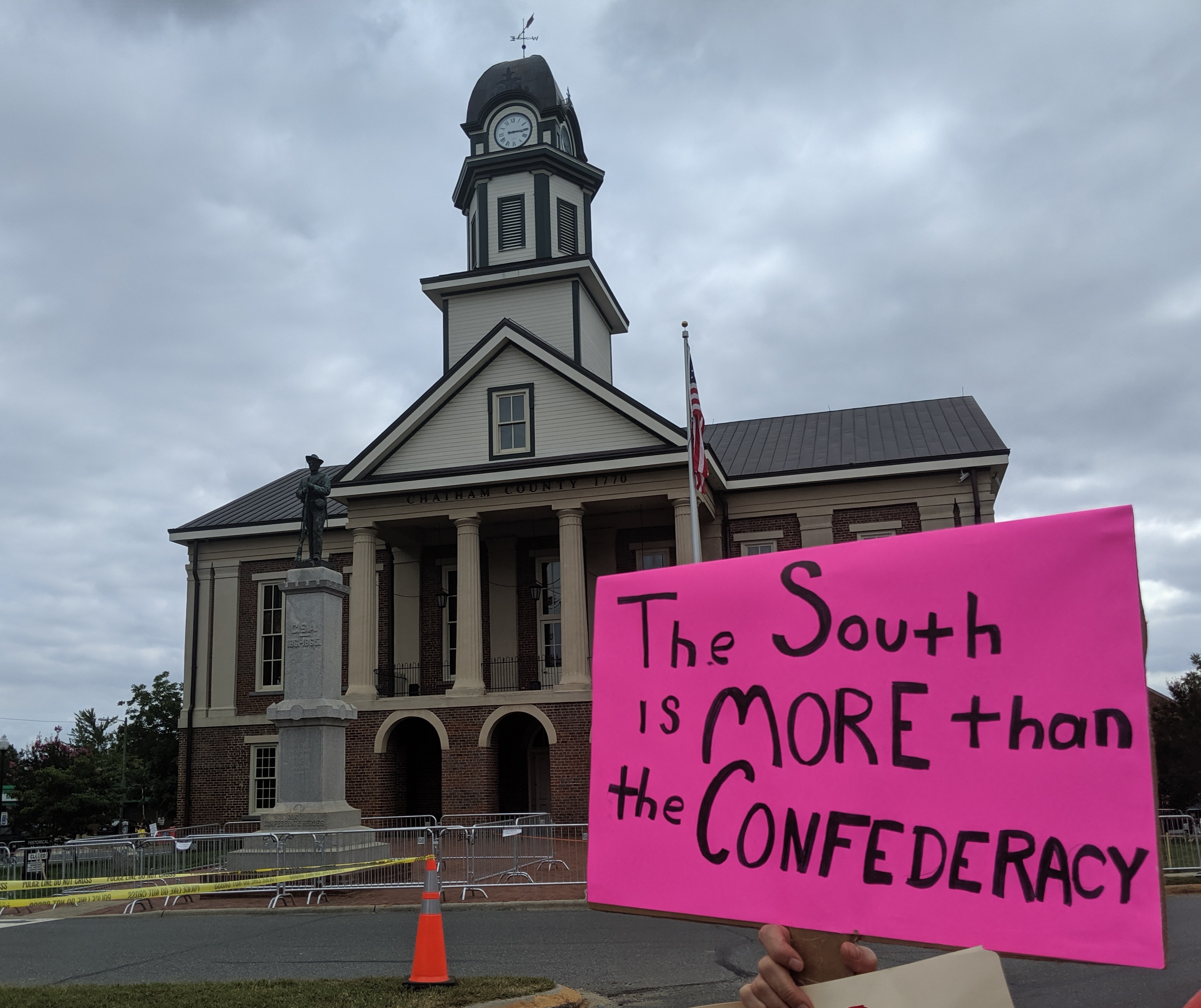Over the past century, few aspects of downtown Pittsboro have stayed the same. From the restaurants and street-side shops to even the Courthouse, the face of the town has been constantly changing. But one very real face has, through all that time, remained resolute, staring silently down at pedestrians and passing cars. To some, a beacon of Southern pride and a testament to their heritage; to others, an anachronistic remnant from a bygone era of bigotry. Pittsboro’s Confederate statue, unnamed, depicting no one in particular, has long been the subject of controversy and the object of protest in an otherwise peaceful community. And now, after more than a hundred years upon its pedestal, it appears to have overstayed its welcome.
“The monument represents government speech that at one time was consistent with the ruling values of the county,” said Commissioner Jim Crawford during a heated town hall at the Chatham County Courthouse that would ultimately decide the statue’s fate. “Now its message is inconsistent with the ruling values of the county.”
This decision comes on the heels of another local Confederate controversy: the toppling and subsequent formal removal of the Silent Sam statue outside UNC Chapel Hill. Silent Sam, like Pittsboro’s statue, is a fictional soldier, so named because he carries no ammunition and cannot fire his gun. However, despite his lacking both identity and artillery, he was far from a neutral symbol for many students on UNC’s campus.
“We as a country have a lot of change and a lot of healing to do, and we are not going to get there putting racism on a pedestal,” said Andrew Skinner, a recent UNC Graduate. “We have the power to be on the right side of history.”
When Silent Sam fell, and the university decided against his reinstallment, it was a harbinger of a much wider social change. Confederate symbols have been contested since their inception, but have been slow to phase out in the modern-day South. According to a report by the Southern Poverty Law Center, at least 110 Confederate monuments have been removed in the United States over the past five years. But still, 139 remain in North Carolina alone — soon to be 138, which many celebrate.
However, not everyone agrees with this negative view of Confederate monuments. Many see them as deeply rooted and culturally significant mementos of an event that forever changed the trajectory of America’s future, or symbols representing the sacrifice of the near 300,000 Southerners who fought and died during the Civil War.
“It means different things to different people and that’s why it’s such a divisive issue,” Northwood history teacher Nicholas McAlister said. “If you look at it from an African-American perspective, those statues are like a symbol of racism—a reminder of the horrors of the past. Others see it more as a sign of Southern pride and Southern heritage and things of that nature. I think that’s why it’s such, like, a touchy subject.”
As of now, based on growing discontent among the local population and an apparent shift in the political position of local government, eviction is imminent for Pittsboro’s confederate statue, though it will presumably not come to such a violent end as that of its counterpart in Chapel Hill. As was decided at that fateful meeting in August, rather than being destroyed, it will be officially returned to its rightful owners, the United Daughters of the Confederacy, to do with what they wish.
– Written by Chase Miller



